#kanak culture
Explore tagged Tumblr posts
Text

Another friendship stamp! This one is from New Caledonia (Kanaky) showing the friendship between it and New Zealand (Aotearoa).
#philately#stamp collecting#stamps#traditional clothing#new caledonia#new zealand#kanaky#aotearoa#kanak#maori#maori culture#kanak culture
17 notes
·
View notes
Text
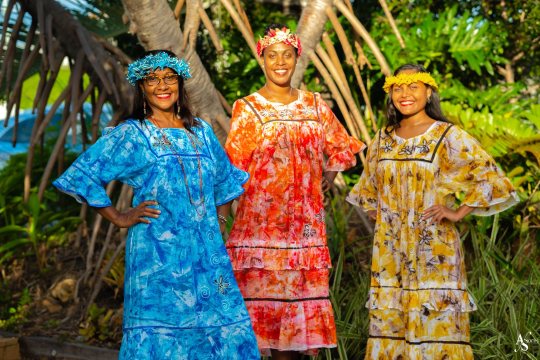
Kanak women, New Caledonia, by Pacific Fair
#kanak#new caledonia#oceania#melanesia#folk clothing#traditional clothing#traditional fashion#cultural clothing
259 notes
·
View notes
Text
Alice Zeniter - Frapper l'épopée
Rentrée littéraire 2024, présentation du roman Frapper l'épopée d'Alice Zeniter une exploration littéraire de la Nouvelle Calédonie, bien au-delà des clichés.
Rentrée littéraire 2024 Exploration littéraire de la Nouvelle Calédonie, bien au-delà des clichés paradisiaques Quel titre, Frapper l’épopée, le nouveau roman de Zeniter Alice ! Toujours la même langue, généreuse, exigeante et même “chatoyante”, tant elle envoûte, mais aussi voix dérangeante, empreinte de révolte, souvent à peine estompée, pour découvrir ce territoire français du bout du monde…
#Adolescence#Adolescents#Ancêtres#Autochtones#Billet littéraire#Bric à brac de culture#Centre pénitenciaire#Chronique littéraire#Chronique livre#Chroniques littéraires#Colonisation#Kanak#Littérature contemporaine#littérature française#Littérature francaise#Litterature contemporaine#Nouvelle Calédonie#roman#Terrorisme
0 notes
Text
Shoutout to all Oceanic LGBTQ+ folks.
Shoutout to all Austronesian LGBTQ+ folks.
Shoutout to all Polynesian LGBTQ+ folks.
Shoutout to all Micronesian LGBTQ+ folks.
Shoutout to all Melanesian LGBTQ+ folks.
Shoutout to all Kwaio LGBTQ+ people.
Shoutout to all Papuan LGBTQ+ folks.
Shoutout to all Australian LGBTQ+ folks.
Shoutout to all Kanak LGBTQ+ folks.
Shoutout to all Norfolk Islander LGBTQ+ folks.
Shoutout to all Māori LGBTQ+ folks.
Shoutout to all New Zealander LGBTQ+ folks.
Shoutout to all Aboriginal Australian LGBTQ+ folks.
Shoutout to all Caledonian LGBTQ+ folks.
Shoutout to all Pitcairn Islander LGBTQ+ folks.
Shoutout to all South Sea Islander LGBTQ+ folks.
Shoutout to all Rapa Nui LGBTQ+ folks.
Shoutout to all Nauruan LGBTQ+ folks.
Shoutout to all New Caledonian LGBTQ+ folks.
Shoutout to all Native Hawaiian LGBTQ+ folks.
Shoutout to all Chuukese LGBTQ+ folks.
Shoutout to all Solomon Islander LGBTQ+ folks.
Shoutout to all West Papuan LGBTQ+ folks.
Shoutout to all Fijian LGBTQ+ folks.
Shoutout to all Tahitian LGBTQ+ folks.
Shoutout to all Samoans LGBTQ+ folks.
Shoutout to all Guamanian LGBTQ+ folks.
Shoutout to all Chamorro LGBTQ+ folks.
Shoutout to all Torres Strait Islander LGBTQ+ folks.
Shoutout to all Ambonese LGBTQ+ folks.
Shoutout to all Tongan LGBTQ+ folks.
Shoutout to all Marquesas Islander LGBTQ+ folks.
Shoutout to all Yapese LGBTQ+ folks.
Shoutout to all Kiribati LGBTQ+ folks.
Shoutout to all Niuean LGBTQ+ folks.
Shoutout to all Northern Mariana Islander LGBTQ+ folks.
Shoutout to all Mashellese LGBTQ+ folks.
Take pride in it all. Your culture, your identity, it’s all so beautiful. Celebrate where you are from and who you are. It makes you you, and that is something to be proud of.
post for Middle Easterners, post for Asians, post for Pacific Islanders , post for Hispanics, post for Africans , post for Native Americans, post for Caribbeans
#mental health#positivity#self care#mental illness#self help#recovery#ed recovery#pro recovery#actuallytraumatized#actually cptsd#lgbt#lgbtq#lgbt positivity#lesbian#gay#sapphic#bi#bisexual#mlm#wlw#trans#transgender#Oceania#nonbinary#asexual#aromantic#aroace#intersex#pansexual#genderfluid
810 notes
·
View notes
Text
So Kanaky-New Caledonia is going through the most violent times it has seen since the 1980s revolt and it's barely on the news. I'm not a local, let alone indigenous, but I'm stuck in Brisbane on my way there because the international airport of Nouméa closed, and worried indigenous friends are keeping me updated.
The Southern Province is seeing a lot of lootings and armed barricades, and two youths were killed by French special forces today.
Why? Because the French government passed a law that changes who gets to vote in Kanaky New Caledonia, from indigenous people, people born in KNC, and people who have lived there continuously since 1998, to everyone who has lived there for at least 10 years. Less than half the population is Kanak, and the strong influx of French people is shrinking their proportion even further. Immigrants who like the sun and the tropical sea but don't need that to mean that they'll learn about the cultures and the country, i.e. expats. So far, this influx was bad for the job prospects of locals and for property prices, but it didn't matter in local elections. The current government is pro-independence, a stance strongly congruent with Kanaks but not with Europeans.
This is Darmanin's and Macron's reaction to the third referendum on independence from France having failed. Darmanin called it 'a minimum of democracy'. The first two referendums were close calls and the second (51/49) more so than the first (53/46). The third was 90% against independence, which was due to a boycott of the referendum; it happened during Covid, electoral campaigns were impossible except vis TV, which is easier for the well-funded loyalists than for their opponents. Macron ignored this. The referendums were very peaceful and disciplined, but since this discipline was used by the State against the indigenous population to legitimize neo-colonialism, the current violence is not a surprise. Last time barricades were used, in the 1980s, they were very successful. We'll see what happens this time.
434 notes
·
View notes
Text

French Miku
She's protesting. Oh, she threw a cobblestone at a cop... She started a fire... She found Darmanin and put him in the fire... She's unstoppable... She overthrew the government and declared the 6th republic... Truly, an icon.
(Translation of the flag's text: "Kill the rich!")
I really like seeing everyone share their culture with Miku, and I wanted to do the same. However, I faced an issue: I didn't know how to represent the French culture. We do not have traditional clothing. Some regions have their own traditional clothing, like Bretagne, Basque, Corse, but not the country. There are all the fashions associated to France, but there are all for the aristocracy (like robe à la française) or the bourgeoisie, and that's neither the majority of the French pop (aristocracy was 1% of the pop) or me. My ancestors weren't these people, I am not these people. But I didn't know how to make a French Miku I could look at and think "She's French".
I thought about doing an Auvergnate Miku. Auvergne is my region, and I love my region, I could talk for hours about my region. And I always have to defend it because it's a rural region and other french are rude af to us. So, I had an idea for an Auvergnate Miku, even tho we don't have cultural clothing. But, Auvergne is a random French region and, as much as I love it, nobody gives a fuck about it in the grand scheme of things.
Then, I remembered, while reading the news about the French government being awful: France is known for its love for revolts and revolution. And so, here she is, French Miku, wearing a safety vest but wearing a mask to hide her identity from cops (ACAB), a bag to held first aids equipment and food for the picnic afterward. Some pins' of the CGT (a confederation of unions), some human rights association, the pride flag and the Kanaks' flag (because it's the current political issue regarding France and colonialism).
#hatsune miku#vocaloid#fanart#my art#traditional art#watercolor#colored pencils#“Death to the rich” is an actual slogan of the Revolution of 1789
84 notes
·
View notes
Text
Splatoon: The Vestigial Species - Design Ideas (Oceania)
If you have not viewed the main post first, please do so. Otherwise, here is a list of archaeological cultures which you are free to choose from to use as an inspiration when designing your human society!
Australia
Indigenous Australians
Melanesia
Papuans
Kanak People
Fijians
Lapita Culture (Proto-Polynesians)
Micronesia
Micronesians
Polynesia
Polynesians
Māori
#splatoon#splatoon 2#splatoon 3#splatoon 4#splatoon headcanon#splatoon fanart#splatoon fandom#splatoon art#fan concept#art collab#art contest#collaborative projects
3 notes
·
View notes
Text
24 septembre : la double face d’une fête nationale en Nouvelle Calédonie
Le 24 septembre est un jour férié en Nouvelle-Calédonie. C’est le 170e anniversaire du rattachement de la Nouvelle-Calédonie à la France. C'est, en effet, le 24 septembre 1853 que le contre-amiral Febvrier Despointes a pris possession de la Nouvelle-Calédonie au nom de l'Empereur Napoléon III.
De fait, le 24 septembre est considéré comme une journée de deuil national par les Kanaks, population autochtone de la Nouvelle-Calédonie. Pour eux, cette date ne symbolise que le jour de la prise de possession de leur pays par la France et le début du colonialisme en Kanaky.
Cette fête a été instituée en 1953, année du centenaire. En 2004, dans la foulée des Accords de Nouméa, elle est devenue la Fête de la citoyenneté à l’initiative de Déwé Gorodey, alors membre du gouvernement. Toutes les communautés sont invitées à partager leurs us et coutumes et leur vision de l’avenir. C’est la 19e édition de cette version nouvelle de la fête nationale de la Nouvelle Calédonie. Pour la seconde fois, un festival intitulé Caledonia marque ce moment de l'année. Il se tient à Nouméa, au centre Tjibaou, du 22 au 24 septembre avec pour thématique : "Partageons et affirmons nos cultures", et un accent particulier donné cette année à la jeunesse et la création.
À Moselle, sur la place du Mwa Kââ, le comité, créé à l'occasion du 150e anniversaire de la prise de possession de la Nouvelle-Calédonie par la France, appelle la population, "toutes communautés confondues", à se réunir pour commémorer cette date du 24 septembre, considérée comme un jour de deuil. Le Mwa Kââ, ou "maison de l'humanité", y est symbolisé par un poteau sculpté de douze mètres.
Après plus de trente ans de partage du pouvoir dans la collégialité, les loyalistes restent persuadés que dans l’État de « Kanaky-Nouvelle-Calédonie », les discriminations ethniques se manifesteraient à leur détriment et que seule la France a la capacité de les protéger. De leur côté, les Kanaks, dans leur grande majorité, dénoncent une situation coloniale, l’une des dernières à ne pas avoir été réglée selon l’ONU. Ce 24-Septembre est célèbré, cette année, dans un climat de grande crispation entre les deux camps, surtout depuis le boycott du 3e référendum d’autodétermination (prévu dans les accords de 1988) dont l’organisation était contestée par les indépendantistes. De fait, l’avenir institutionnel de l’archipel demeure très flou. L’Union calédonienne (UC), principale composante d’un Front de libération nationale kanak et socialiste (FLNKS) a rejeté le projet Darmanin et rompu toute relation avec le gouvernement, tout en appelant à une mobilisation politique pour ce 24-Septembre… À ces tensions locales s’ajoutent les tensions géopolitiques récurrentes dans la zone Asie-Pacifique.
La France considère, en effet, la Nouvelle-Calédonie comme un territoire stratégique essentiel dans la région Asie-Pacifique pour contrer les ambitions chinoise. Des exercices militaires sont d’ailleurs en cours. Du 10 au 30 septembre l'armée de Terre française et son homologue japonaise s'entraînent conjointement en Nouvelle-Calédonie dans le cadre de l'exercice Brunet-Takamori 23.
Un article de l'Almanach international des éditions BiblioMonde, 23 septembre 2023
#Kanak#Kanaky#Nouméa#Febvrier Despointes#colonisation#indépendance#Nouvelle-Calédonie#Mwâ Kââ#Déwé Gorodey#Païta
3 notes
·
View notes
Note
Quand je pense qu'il y a des milliers d'Algériens qui sont coincés en Nouvelle-Caledonie depuis des décennies à cause de la France... Je n'ai pas pu voir mon pays pendant 9 mois et j'ai eu l'impression d'étouffer. Ça fait des générations qu'ils n'ont pas vu leur pays pour qui ils ont sacrifié leurs vies. Certains sont morts là bas sans jamais avoir pu retourner en Algérie. À chaque vidéo que je regarde à ce sujet je les vois en train de pleurer. Leur patrie, leur pays leur manque. J'ai envie de pleurer. Pourquoi l'Algérie ne les a pas rapatriés plutôt ? Je ne comprends pas. Ça me brise le cœur.
Alors beaucoup d’entre eux me faisait de la peine jusqu’à que j’apprenne qu’en fait ils savent pas ce que c’est d’être Algériens.
Une des raisons pour laquelle la France a créé un bagne en Kanaky c’était pas que la géographie c’était aussi pour monter les colonisés les uns contre les autres. Les Algériens envoyés là bas était tous (ou quasiment tous) des hommes. Donc tout ces “Algériens de Kanaky” leur dernier ancêtres 100% Algérien date de 1870. Ils sont tous métissés caldoches/Algériens ou Algériens/mélanésiens (principalement Kanak). Le métissage a été fait sur plusieurs générations donc au final ils ont plus une culture de Caldoches ou de Kanak. Ceux qui ont un culture de Kanak pas de soucis ils se rappellent de ce que c’est d’être Algérien et s’ils veulent être rapatrié (ils veulent pas ils veulent juste visiter une partie de la terre de leurs ancêtres et certains ont pu le faire) pas de soucis ils sont les bienvenus. Ceux qui ont une culture de caldoches? Ceux la, la France peut les garder/récupérer après la libération de la Kanaky.
Beaucoup de ceux qu’on voit pleurer me faisait de la peine jusqu’à que je réalise qu’ils soutiennent le colonialisme Français en Kanaky et qu’ils pleurent pour l’Algerie plus comme un pied noir ou un harki pleure pour l’Algerie que comme une Algérien pleure pour l’Algerie.
De la même manière que le simple fait qu’une personne est noir ou arabe ou plus largement racisés ne fait pas d’elle automatiquement un allié dans la lutte contre la suprématie blanche, avoir un ancêtre qui a lutté contre le colonialisme et sacrifié beaucoup ne veut pas dire que la personne est forcément un allié contre le colonialisme.
Perso je pense qu’il faudrai soit conditionner la double nationalité (franco-Algérienne) à un positionnement contre la colonisation de la Kanaky par la France. Mais ce serai très compliqué. Soit il faut attendre la libération de la Kanaky et ne donner la double nationalité (Kanak-Algérienne cette fois) qu’à ceux que les Kanak ont accepté de garder sur leur terre parce qu’ils n’étaient pas des traitres.
Je semble probablement dure mais autant je peux accepter de pas être d’accord avec des Algériens sur plein de sujet autant le colonialisme après ce que notre peuple a vécu c’est niet. Et soutenir le colonialisme français en plus quand il est la raison pour laquelle ton ancêtre a été déporté c’est culotté. Ceux qui ont eu un passport Algérien à l’indépendance ça c’est déterminé non pas à ce que les ancêtres avaient fait ni même au sang uniquement ça c’est déterminé par rapport au positionnement que les gens ont eu face aux colonialisme. La majorité des Algériens « de sang » ont choisis la lutte contre le colonialisme mais les Algériens « de sang » qui ont choisis la lutte pour le colonialisme ne sont pas vu comme Algériens. En même temps des gens comme Audin ou Fanon sont vus comme Algériens alors qu’ils ont zéro sang Algérien mais ils se sont positionnés contre le colonialisme.
Contrairement à ce que je pensais tout les Algériens ne naissent pas ‘hor’ et ceux qui ont une culture Caldoche font partie des Algériens qui ne sont pas naît avec ce désir de liberté et de dignité. À titre personnel je suis reconnaissante à leurs ancêtres mais ça s’arrête là.
6 notes
·
View notes
Text
Kanak House of Fashion

Our design philosophy at Kanak House of Fashion is rooted in the belief that fashion should be both beautiful and meaningful. We draw inspiration from India's diverse cultural tapestry, infusing traditional motifs and techniques with contemporary silhouettes and color palettes. The result is a collection that resonates with the modern Indian woman—confident, cultured, and ready to make a statement.
2 notes
·
View notes
Text
What are some recommended itineraries for Ayodhya tours?

Exploring the sacred city of Ayodhya, steeped in the echoes of ancient epics and the footsteps of gods, offers a journey back in time to the heart of India's mythological heritage. This guide presents a meticulously planned three-day itinerary designed to help travelers immerse themselves in the spiritual and historical grandeur of Ayodhya, the revered birthplace of Lord Shri Ram Ayodhya Tour Packages.
Day 1: Arrival and Exploration
- Morning:
- Arrival in Ayodhya: Start your journey by checking into your hotel and freshening up for a day full of exploration.
- Visit Ram Janmabhoomi Temple: Your first stop is the Ram Janmabhoomi Temple, a site of immense historical and religious significance, believed to mark the birthplace of Lord Rama Ayodhya Tour Packages.
- Afternoon:
- Hanuman Garhi: After a local vegetarian lunch, head to Hanuman Garhi, a fortress-like temple dedicated to Lord Hanuman, known for its panoramic views and spiritual aura.
- Kanak Bhawan and Dashrath Mahal: Next, explore Kanak Bhawan, adored for its stunning architecture and peaceful atmosphere, and visit the historical Dashrath Mahal.
- Evening:
- Saryu River Aarti: Experience the divine evening aarti at the Saryu River—a ceremony that fills the atmosphere with spiritual fervor Ayodhya Tour Packages.
- Local Market Visit: Conclude your day with a stroll through the vibrant Lata Mangeshkar Chowk and Naya Ghat markets, perfect for picking up souvenirs and local handicrafts.
Day 2: Cultural and Historical Sites
- Morning:
- Tulsi Smarak Bhawan: After breakfast, visit Tulsi Smarak Bhawan, dedicated to poet Tulsidas, author of the Ramcharitmanas, offering insights into his life and works Ayodhya Tour Packages.
- Mid-Morning:
- Nageshwarnath Temple: Continue to the Nageshwarnath Temple, known for its ancient origins and cultural significance Ayodhya Tour Packages.
- Guptar Ghat: Enjoy serene views and activities like boating and camel rides at Guptar Ghat.
2 notes
·
View notes
Text
untuk hari bahasa ini, saya cubalah mengajarkan semua tentang sikit budaya melayu dan berkongsi kosa kata juga
(for this language day, I will try to teach a little about Malay culture and share vocabulary as well)
amnsklfna maafkan jika saya salah lmao also my skill in this language is atrocious dont take me as the most refined example of writing in malay i got the equivilent of a C- in my finals take that as you will. ALSO this is mostly from a Singaporean perspective, im born singaporean so yeah.
PERTAMA, apa Bahasa Melayu? Inilah bahasa Austronesian, juga bahasa kebangsaan dalam Brunei, Malaysia dan Singapura (Singapore). Bahasa Melayu ditulis biasa dalam Latin, juga dikenali Rumi. Ada juga Jawi yang berdasarkan tulisan Arab. Jika kau ingin tahu huruf dalam jawi inilah video yang tersekat dalam kepala saya daripada andalus (saya buruk tuliskan dalama jawi dan arab juga, walaupun saya belajar, saya tidak tahu banyak;;;)
budaya melayu besambung dengan budaya muslim, itulah sebab ada banyak seseorang melayu yang meraikan dengan kalendar islam. satu perayaan macam tu ialah Hari Raya. ada dua majlis; aidilfitri dan haji, saya akan bercakap tentang Hari Raya Aidifilti sahaja kerana lebit dekat tahun ini dan terkenal.
Pada bulan sebelum ialah ramadhan yang untuk puasa. Kita jangan makan dari Subuh (around sunrise) hingga Maghrib (around sunset). Sebelum Subuh, ingin makan Sahur dan selalu berdoa. Pada Magrhib, ingin makan untuk berbuka puasa (lazimnya cakap "buka" secara ringkas). Juga dalam bulan ini sebelum Aidifilti, keluarga akan sediakan dengan bersihkan rumah untuk pelawat, membelikan baju kurung baharu, dapatkan kuih, etc etc.
aaaa ada banyak kuih, inilah apa-apa yang saya boleh namakan (banyak ada daripada Singapura); kuih lapis, kuih salat? ondeh ondeh, kuih bahulu, kuih dadar, BISKUT CORNFLAKES OMG adakah itu dikira?. ada banyak lebih lol.

JUGA! Di Singapura, bila ramadan, ada Pasar Malam yang besar dalam Geylang. Tidak sahaja di Geylang ada pasar malam tetapi inilah yang sangat popular. Ada BANYAk gerai-gerai yang jual makanan. Semua yang belikan daripada pasar malam geylang tahu Ramly Burger, deep-fried Oreos, vadai, KEBAB, DENGDENG. (saya suka beli aiskrim yang golek dan kebab ayam mmmm)

Dalam Geylang juga, mereka akan membeli baju tradisional untuk melawat keluarga. Baju kurung (ehh untuk baju tradisional, wanita pakai baju kurung, lelaki pakai baju melayu tetapi nama sama-sama bagaimanapun) adalah yang pakaian biasa. Selalunya, satu isi rumah akan memilih untuk menyelaraskan warna (tetapi ia tidak wajib, lmao keluarga saya tidak kisah)
Untuk lelaki, mereka pakai songkok (that flat black hat) dan samping (the long scarf wrapping around the waist)
Untuk wanita, ada pakai sarong (skirt) dengan baju. Jika inginkan, juga akan pakai tudung (type of hijab)
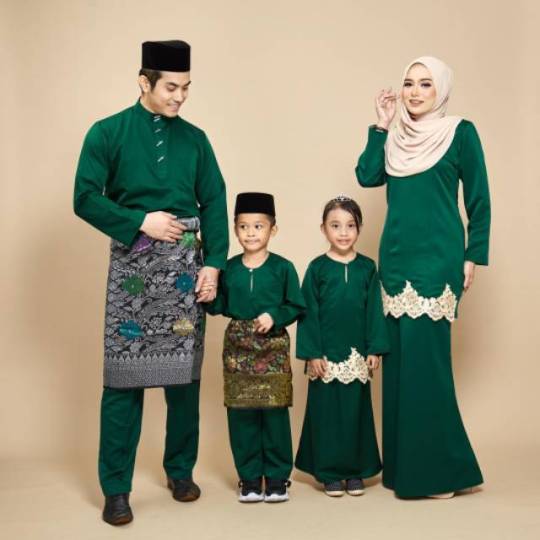
Baju kurung juga dipakai pada perayaan lain, contohnya ialah perkahwinan


(seluruh zaman kanak-kanak saya hanya menghadiri majlis perkahwinan, inilah topik lain lmaooooo)
Pada Hari Raya Aidifilti tetapi sebelum pergi raya, keluarga rapat akan minta ampun. Selalunya apabila orang mula menangis. Selepas itu, pergi RAYA!!! Apabila dalam rumah seseorang lain, jika kau tidak berkerja sekarang, boleh dapatkan duit raya! (kerana saya dibesarkan di singapore dikelilingi oleh pengaruh cina, saya juga memanggil ini "angpao" juga)

OHHHH ADA BANYAK MAKANAN;;;; Nenek saya akan memasak banyak pada ramadan dan Hari Raya. Rendang, lontong, KETUPAT OHHH KETUPAT, KARI AYAM (ibu saya setiap hari raya aidifitri masakan kari ayam hijau, UNTUK HARI RAYA AIDIFITRI SAHAJA, ohhhhh itulah bahagian kegemaran saya, ASBFKASB SAYA LAPAR.)
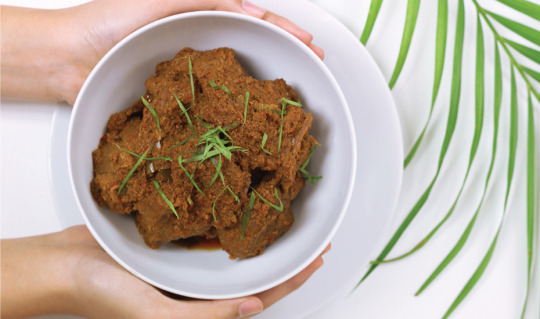


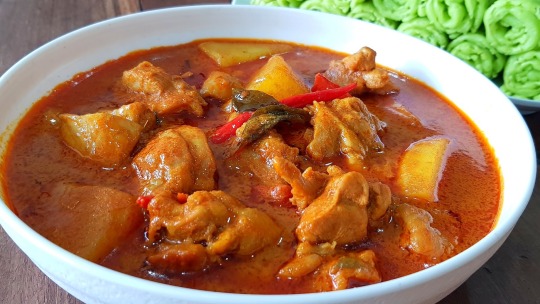
ketupat ialah... macam ikon untuk mewakili hari raya Aidifilti, contoh:

ikon selain untuk hari raya adalah: bunga api, neon string lights (macammana cakap;;;), apa apa ini, obor buluh, etc.
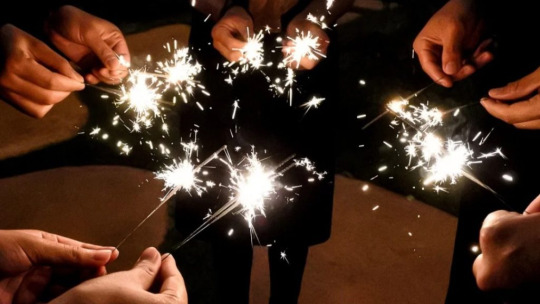
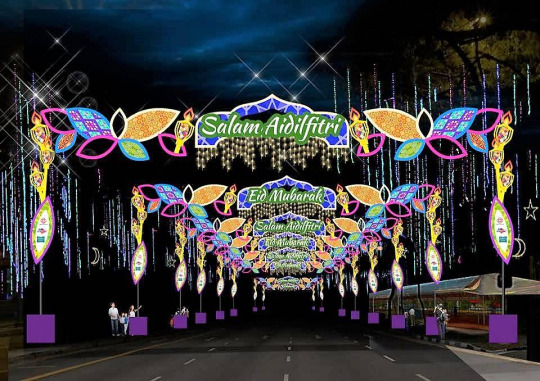

Saya suka hari raya walaupun, kaki saya lebih sakit selepas melawat BANYAK KELUARGA DAN KAWANNYA YA ALLAH:;; tidak mengapa jika kau menanggalkan kasut di dalam rumah entah bagaimana KAKI AKAN SAKIT pada penghujung hari;;;;;;
uhhhh lain-lain tentang budaya melayu? kita ada seni! Satu seni beladiri ialah silat melayu! saya tidak tahu banyak tentang ni tetapi sangat hebat
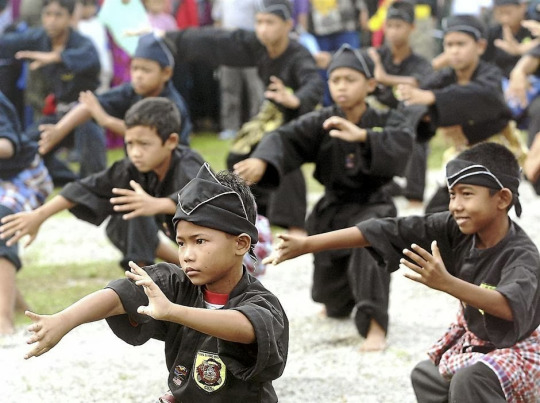
ada seni persembahan: satu contoh ialah dikir barat
youtube
juga ada permainan, ada yang terkenal ialah wau (kite)

dan congkak (like that one club penguin game, mancala, im not kidding)
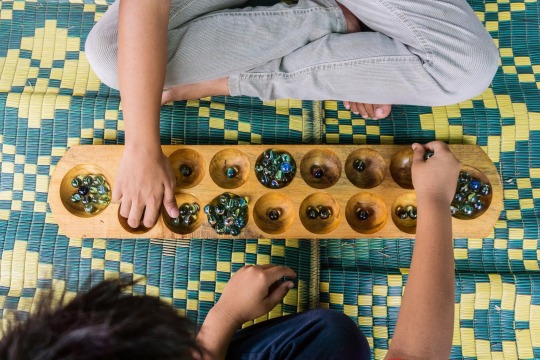

ada banyak budaya melayu yang juga daripada budaya indonesia kerana pengaruh ia. Itulah sebab kita ada wayang kulit (natively from Java or Jawa in melayu)
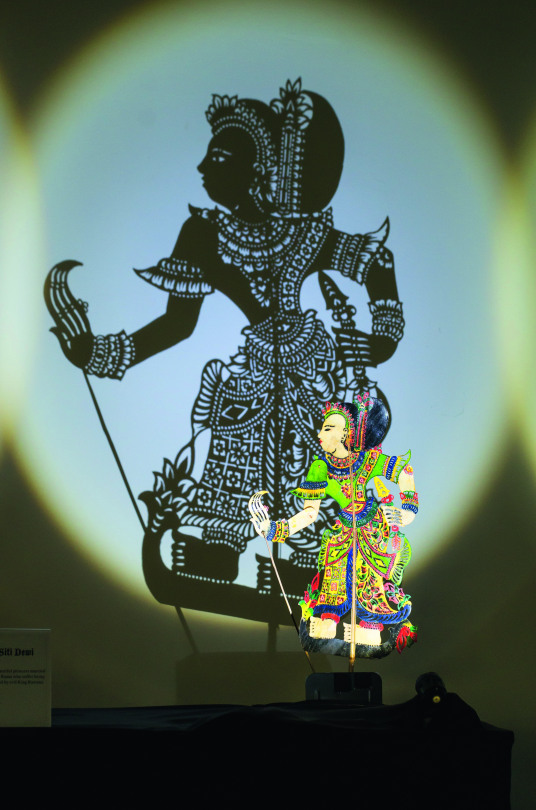
Adakah kamu tahu; Singapura ditemui oleh Sang Nila Utama dan mula-mula asli Melayu (pada masa itu pulau itu dipanggil Temasek sebelum dimiliki oleh British). Itulah sebab dalam Singapura, bahasa dan lagu kebangsaan (Majulah Singapura) ialah dalam bahasa melayu. Singapura bukan setakat orang cina, kita orang melayu dan india pun ada di sini;;;
OK THAT'S ALL IVE GOT HHEHAH SAYA TULISKAN SELAMA BERJAM-JAm BAI
5 notes
·
View notes
Text
Best places to visit in Ayodhya
Exploring Ayodhya: Unveiling the Gems of this Sacred City

Welcome to Ayodhya - A Land of Spiritual and Cultural Richness:
Ayodhya, one of the oldest cities in India, which steeped in history and spirituality, holds a significant place in the hearts of millions of people around the world and is Known as the birthplace of Lord Ram, Ayodhya is a hidden treasure of ancient temples, serene rivers, lush green gardens, and vibrant cultural heritage. It is a captivating destination for travelers interested in exploring its mystical past. This blog will guide you through the top attractions in Ayodhya, showcasing the diverse tapestry of this captivating city.
Overview of Ayodhya's Historical Significance and Top Attractions:
With a history dating back thousands of years, Ayodhya brims with architectural marvels and sacred spots that provide a glimpse into India's vibrant past. From the famous Ram Janmabhoomi Temple to the tranquil Saryu River banks, Ayodhya beckons travelers seeking spiritual enlightenment and cultural immersion.
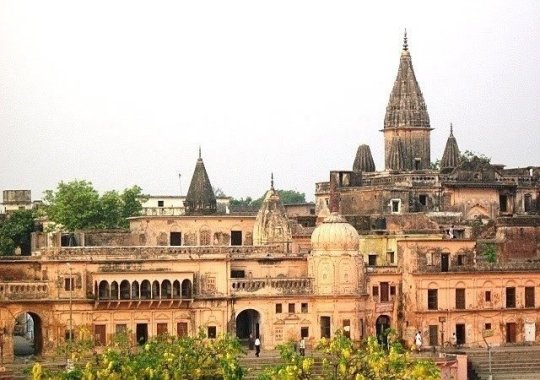
Heritage Sites and Temples
Ram Janmabhoomi Temple: The Birthplace of Lord Ram
The Ram Janmabhoomi Temple stands as a testament to the enduring devotion to Lord Ram. Thought to be the birthplace of the revered deity, this sacred site attracts pilgrims and tourists alike, in search of blessings and spiritual solace.

Hanuman Garhi: A Spectacular Temple Dedicated to Lord Hanuman
Perched atop a hill, Hanuman Garhi offers panoramic views of Ayodhya and houses a magnificent temple dedicated to the mighty Lord Hanuman. The temple's tranquil atmosphere and awe-inspiring architecture make it a must-visit for devotees and admirers of Hindu mythology.

Kanak Bhawan: A Beautifully Ornate Shrine Housing Lord Ram and Goddess Sita
Kanak Bhawan, an skillfully designed shrine which is dedicated to Lord Ram and Goddess Sita, famous for its exquisite artwork and divine aura which attracts visitors . The temple's rich history and spiritual significance make it a significant attraction in Ayodhya's temple circuit.

Natural Attractions and Parks
Saryu River Bank: A Serene Spot for Relaxation and Boating
The tranquil banks of the Saryu River offer a peaceful retreat for visitors searching solace amidst nature's beauty. Whether you wish to take a leisurely boat ride or simply relax by the river, the Saryu River provides a peaceful environment from the hustle and bustle of city life.

Ayodhya Gardens: Lush Greenery and Tranquil Atmosphere
Exploring the verdant Ayodhya Gardens offers a refreshing experience for nature lovers. The lush greenery, vibrant flowers, and wonderful ambiance of these gardens create a perfect backdrop for leisurely strolls and contemplative moments.

Tulsi Udyan: A Botanical Garden with a Variety of Flora and Fauna
Tulsi Udyan, a botanical garden showcasing a diverse range of flora and fauna, which offers a unique opportunity to immerse oneself in nature's charm. From rare plant species to colorful butterflies, Tulsi Udyan's beauty captivates visitors of all ages.

Cultural Heritage and Museums
Guptar Ghat: An Ancient Ghat on the Banks of Saryu River
Guptar Ghat, an ancient bathing ghat on the banks of the Saryu River, which holds a immense cultural and religious significance. Pilgrims and tourists flock to this sacred site to perform rituals and seek spiritual blessings in the serene waters of the river.
Ayodhya Shodh Sansthan Museum: Showcasing Archaeological Artifacts
The Ayodhya Shodh Sansthan Museum offers a glimpse into Ayodhya's rich heritage through a vast collection of archaeological artifacts and historical relics. From ancient sculptures to pottery artifacts, the museum's exhibits provide a fascinating insight into Ayodhya's cultural legacy.
Valmiki Ramayan Bhawan: A Cultural Center Exhibiting Stories from Ramayana
Valmiki Ramayan Bhawan serves as a cultural hub dedicated to preserving and promoting the timeless epic of Ramayana. Through engaging displays and interactive exhibits, the cultural center brings to life the heroic tales of Lord Ram, Goddess Sita, and other revered characters from the epic saga.
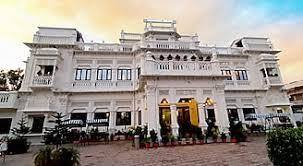
Where to Stay in Ayodhya?
Luxury Hotels: Offering Premium Facilities and Services
For travelers seeking a lavish and indulgent stay, Ayodhya constructed a range of luxury hotels that offer exceptional comfort, pampering amenities, and world-class hospitality. From opulent suites to fine dining restaurants, luxury hotels in Ayodhya ensure a truly upscale experience for discerning guests.
Budget Accommodations: Comfortable Stay at Affordable Prices
Budget accommodations in Ayodhya provide an affordable yet comfortable stay for frugal travelers looking to explore the city on a tight budget. With clean rooms, essential amenities, and convenient locations, budget accommodations offer a practical lodging solution without compromising on quality.
Home Stays and Guest Houses: Living with a Local Touch
Immerse yourself in Ayodhya's local culture and hospitality by choosing to stay in a cozy home stay or guest house. These personalized accommodations offer a warm and welcoming environment, allowing guests to experience authentic Ayodhya living while forging meaningful connections with local residents.
Summing Up
Ayodhya's diverse attractions, rich cultural heritage, and spiritual significance make it a must-visit destination for travelers seeking a profound cultural experience. From ancient temples to tranquil gardens, Ayodhya's beauty and serenity beckon visitors from far and wide to explore its timeless charm. Plan your journey to Ayodhya and embark on a memorable adventure filled with history, spirituality, and cultural treasures.
#religious#religious poetry#travel#ayodharammandir#ayodhya#ram mandir#uttarpradesh#ghats#pilgrimage#architecture#historic#heritage#monument#tourism#travel photography#travel blog#traveling#rambles
4 notes
·
View notes
Photo

New Caledonia: The Kanak People & Tjibaoou Cultural Centre
17 notes
·
View notes
Text
So Kanaky-New Caledonia is going through the most violent times it has seen since the 1980s revolt and it's barely on the news. I'm not a local, let alone indigenous, but I'm stuck in Brisbane on my way there because the international airport of Nouméa closed, and worried indigenous friends are keeping me updated.
The Southern Province is seeing a lot of lootings and armed barricades, and two youths were killed by French special forces today.
Why? Because the French government passed a law that changes who gets to vote in Kanaky New Caledonia, from indigenous people, people born in KNC, and people who have lived there continuously since 1998, to everyone who has lived there for at least 10 years. Less than half the population is Kanak, and the strong influx of French people is shrinking their proportion even further. Immigrants who like the sun and the tropical sea but don't need that to mean that they'll learn about the cultures and the country, i.e. expats. So far, this influx was bad for the job prospects of locals and for property prices, but it didn't matter in local elections. The current government is pro-independence, a stance strongly congruent with Kanaks but not with Europeans.
This is Darmanin's and Macron's reaction to the third referendum on independence from France having failed. Darmanin called it 'a minimum of democracy'. The first two referendums were close calls and the second (51/49) more so than the first (53/46). The third was 90% against independence, which was due to a boycott of the referendum; it happened during Covid, electoral campaigns were impossible except vis TV, which is easier for the well-funded loyalists than for their opponents. Macron ignored this. The referendums were very peaceful and disciplined, but since this discipline was used by the State against the indigenous population to legitimize neo-colonialism, the current violence is not a surprise. Last time barricades were used, in the 1980s, they were very successful. We'll see what happens this time.
15 notes
·
View notes
Text
🌟 Exploring Ayodhya: Must-Visit Destinations 🌟
Explore the intricate tapestry of Ayodhya's cultural and spiritual heritage! 🏰✨ Here, we present a guide to some enchanting destinations that should be at the top of your list:
Ram Janmabhoomi: Witness the sacred ground where Lord Rama was believed to be born. The tranquil atmosphere and the divine vibes make it a must-visit for spiritual seekers.
Hanuman Garhi: Perched atop a hillock, this ancient temple dedicated to Lord Hanuman offers panoramic views of Ayodhya. Experience serenity and seek blessings in this iconic abode.
Kanak Bhawan: Admire the exquisite architecture of Kanak Bhawan, a beautiful temple gifted to Sita and Rama by Queen Kaikeyi. The vibrant interiors and historical significance make it a fascinating stop.
Treta Ke Thakur: Pay homage at this sacred site, believed to be the spot where Lord Rama performed the Ashwamedha Yagna. The energy here is palpable, connecting you to the epic Ramayana.
Guptar Ghat: Enjoy a peaceful riverside retreat at Guptar Ghat, where Lord Rama is said to have taken Jal Samadhi. The serene surroundings offer a perfect setting for reflection.
Tulsi Smarak Bhawan: Dedicated to the renowned poet-saint Tulsidas, this museum showcases his life and works. Immerse yourself in the literary heritage that thrived in Ayodhya.
Remember to embrace the divine energy and cultural richness as you explore Ayodhya's treasures. Share your moments using #AyodhyaDiaries and let the world witness the charm of this spiritual haven. 🙏🏛️
2 notes
·
View notes